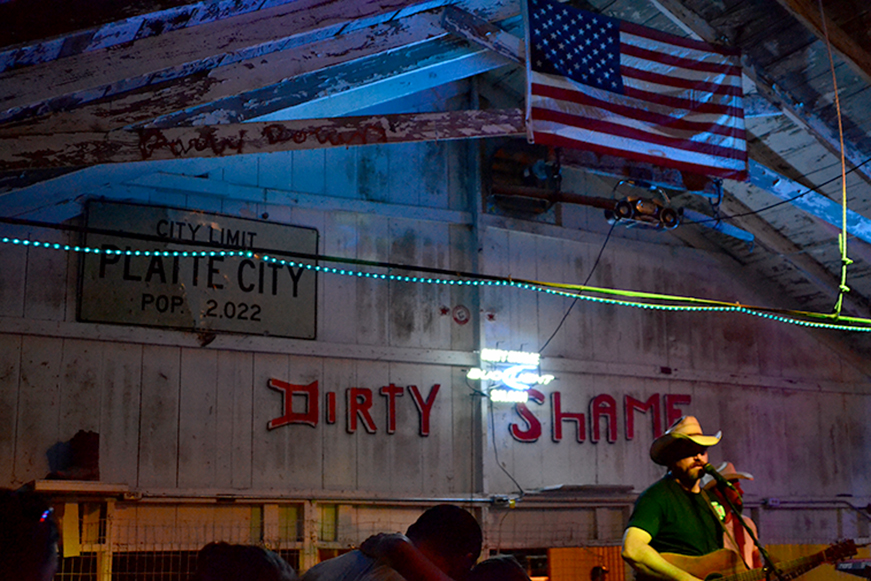 I don’t like meanness. There’s too much in the world already.
I don’t like meanness. There’s too much in the world already.
So I’m glad the Confederate flag was taken off the wall last week in the Dirty Shame Saloon at the Platte County Fair, after news coverage. The dirtiest shame is that fair board members didn’t have the common sense to remove it after its appearance on the saloon wall in recent years at the fair.
But it’s especially insensitive this summer after the horrible murders in the South Carolina church and after the discussions that followed brought sensitivities about the Rebel flag front and center.
“Welcome to the Platte County Fair,” said a sign on the fence at the north entrance to the fairway, a place watched over by an African-American woman on the security force as I left the fair Friday evening. The Platte County Fair represents the entire county and all should be welcomed to attend.
A Confederate flag sends the message, “You are only welcome here if you think like me.” And history has shown that thinking to be often most unpleasant.
This isn’t about political correctness. Rather this is about human decency.
There are good reasons why you don’t see the Rebel flag flying at Kauffman Stadium where the Royals play baseball, or Arrowhead Stadium where the Chiefs play football, or at the White House, or the Pentagon, or at some U.S. Army base in Afghanistan where military personnel are protecting us from ruthless terrorism.
For many people the Confederate flag stands for a brutal history of slavery, an ugly stand against integration and civil rights in the post-World War II years, meanness towards people based on skin color and outright revolt against a democracy that shields and protects us.
Now I’m not saying everyone should be stopped by law or policy from displaying this flag as part of their heritage or belief system. But a wall on an iconic building for a semi-public institution like the fair is not the place for this flag.
If your Platte County ancestors fought in the Civil War to keep the whips, shackles and buying and selling of human beings that was slavery, and you’re proud of it, go ahead and hang the flag on a pole in your yard. If you are rebelling against authority or anyone who is not a far-right conservative, go ahead and stick a Confederate flag in your pickup truck bed or on your demo derby car and fly it proudly for your beliefs.
America’s freedom of speech guarantees your right.
But it’s not good for a board that manages an event that’s supposed to be about community to be sanctioning the flag on their building’s wall, right beside a Platte City city limit sign.
The Rebel flag on the wall is not an iconic tradition in the Dirty Shame, either. I’ve been around this fair since 1981 and didn’t notice this flag in this spot until recent years. I assumed a band playing in the saloon stuck it up to identify themselves as exponents of southern country rock.
Don’t think for a minute, either, that the Rebel flag represents all of Platte County in the Civil War. There were plenty of southern soldiers and Confederate sympathizers here, but there were also plenty of Union soldiers. As the 150th anniversary of the war began in 2011, the Weston Museum had an exhibit that included Union Army Capt. Charles Guenther’s cap-and-ball revolver, Union volunteer William Kyle’s canteen and other similar artifacts.
Weston was generally pro-union. Before the war, the press for an anti-slavery newspaper in Parkville was tossed in the Missouri River.
And this war was about slavery.
Yes there were other issues, and three or four active political parties before the war, but slavery was the main event, the trigger. To think otherwise is to whitewash away the emotion of those times, including the brutality of slavery.
In 1858, Platte County historian W.M. Paxton noted the following in his Annals of Platte County: “SLAVES SOLD AT PLATTE CITY BY THE SHERIFF — Gabriel, aged 2, $235; Reuben, aged 5, $510; Lewis, aged 4, $410; Lewis, aged 12, $1,000; Amelia, aged 14, $710; Jane, aged 15, $801; Emma, aged 17, $1,000; Sarah, aged 20, $865; Permelia, aged 23, $993; Eliza and child, aged 30 and 1, $930; Harriet, aged 45, $485.”
Only one entry references mother and child being sold together.
President Abraham Lincoln issued the Emancipation Proclamation to free slaves in Confederate states in January, 1863, but Missouri, while a state torn by border war, had not officially left the Union.
“The Missouri River is frozen over,” Paxton wrote on Feb. 1, 1863, “and many slaves secure freedom by crossing on the ice and enlisting in the Federal army.”
What followed that war was more than a century of oppressive Jim Crow laws, lynch mobs, the Ku Klux Klan, economic disparity and general meanness. The Civil Rights Movement in the 1950s and 1960s made great strides, but not without a lot of pain.
For every individual who simply sees the Rebel flag as an interesting part of history, there are others who embrace it for hateful attitudes that gave birth to that flag, attitudes that are still expressed today. That’s why a lot of people are uncomfortable with it being an emblem exhibited as it if were a general public attitude.
The long-term future of this fair should be what counts, what carries it forward another 150 years.
Needless controversy may prompt people to vote silently on this issue by simply not attending the fair, or dropping out as volunteers, or perhaps by ceasing their sponsorships and participation without comment.
Peace makers restarted this fair after the Civil War. They were tired of war. Nowadays, the fair should be about community and not divisive politics.
When I walked out into the parking lot late on Friday night, a car had a United States flag displayed on a pole standing upright in a holder mounted on a trailer hitch.
That’s American.
Bill Graham, who lives in the Platte City area, may be reached by e-mail at editor@plattecountycitizen.com.


